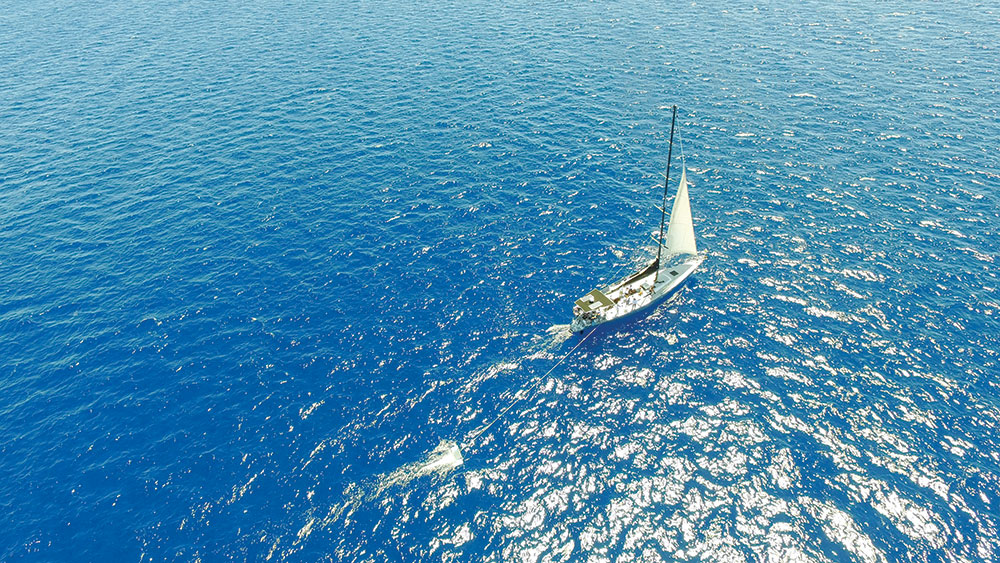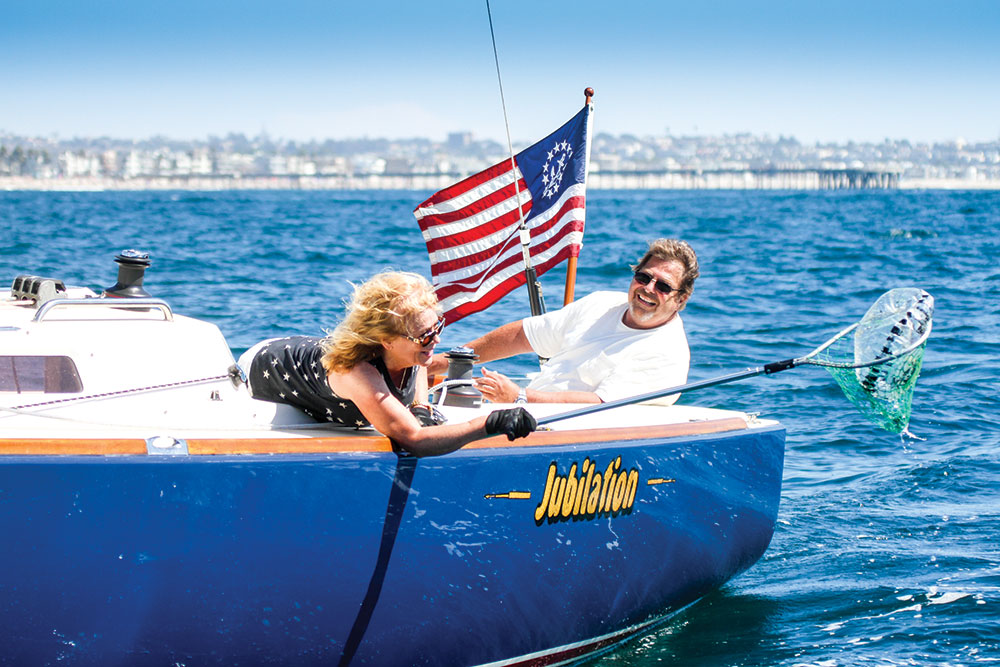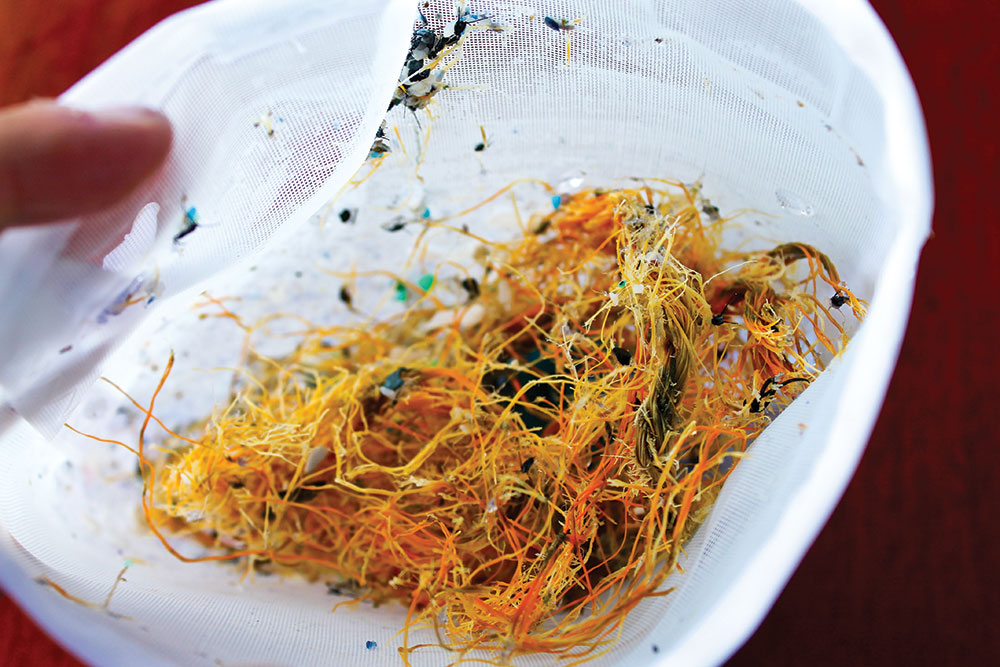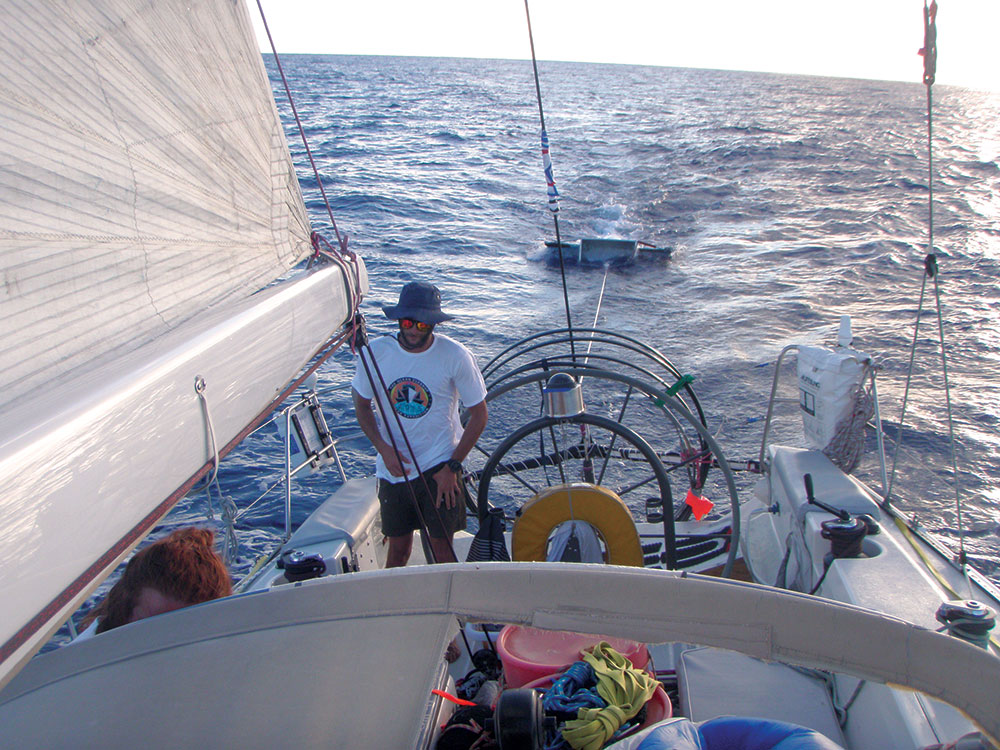The fight against ocean plastic

When 27 sailboats joined the largest attempt to survey the plastic floating in the Pacific Ocean this summer, their crews might have expected to find large pieces of plastic floating on the surface. Instead, what they found by using specially designed trawls is much more sinister: The ocean is filled with masses of microscopic bits of plastic.
Organized by The Ocean Cleanup with a variety of partners, including the American Sailing Association, the so-called Mega Expedition used a fleet of sailboats sailing from Hawaii to California along with the 171-foot research ship Ocean Starr to collect samples from the what has become known as the Pacific Garbage Patch, where floating debris collects due to the vortex of currents in the Northern Pacific Gyre. Boats towed cone-shaped collection devices called manta trawls to collect samples that will be used by The Ocean Cleanup to estimate the amount of plastic in the ocean and enable the organization to tailor its technology to best suit the problem.

Although the expedition was organized just a few months before it began, organizer Stella Diamant said the response to the call for help was impressive.
“It is good to see that a lot of sailors are aware of the issue and want to get involved,” she said.
Many of the boats that participated—a varied group that included 30-footers, Santa Cruz 52s, TP52s, Gunboats and even a schooner—incorporated the expedition into their return from the Transpac race.
The expedition ran into a considerable amount of bad weather that limited the amount of trawling the boats could do, said Diamant, who sailed on the Gunboat 66 Extreme H2O.
“We had hoped to trawl several times a day while we were in the high, but we never really reached the high,” she said. “On our boat we were only able to trawl seven times; the sea state was just so bad. Most of the boats were really keen to do the research, but it was just impossible.”

Despite the reduced number of samples collected, The Ocean Cleanup team has been getting excellent data from the material that have been analyzed so far, Diamant said. In addition to the samples collected by the Mega Expedition sailboats, Ocean Starr collected more than two shipping containers full of plastics that will also be analyzed.
Founded by Dutch inventor Boyan Slat, who was just 19 when he created the organization in 2013, The Ocean Cleanup is on track to launch its a pilot program to clean portions of the ocean in Japan next year.
Lenny Shabes, ASA chairman, said it was Slat’s creative thinking that made the sailing education organization want to support the Mega Expedition.
“He’s young and a fresh thinker who inspired us and offered a solution,” Shabes said. “He’s the first guy to say, ‘I have a solution that might work.’ This is one of the only chances we have to really make an impact on our waterways. Who knows if it’s going to work but at least he’s trying something.”
ASA made a series of videos documenting the Mega Expedition and will continue to document and publicize The Ocean Cleanup’s efforts going forward, he said.
“We want to make our base of enthusiast sailors aware of what is going on in the ecological world of our oceans and suggest things they can do to help,” Shabes said.
ASA will soon launch an effort to get sailors to pick up debris every time they are on the water, he said.
“We’re launching a major campaign to pick up a floating balloon, pick up a bottle, something. Bring one thing back from the ocean and it helps,” said Shabes, who practices what he preaches. “Our grandkids don’t say, ‘Let’s go sailing.’ They say, ‘Let’s go pick up some trash.’”
The technology being developed by The Ocean Cleanup will pick up larger pieces of plastic but not the microplastic that is infiltrating the ocean. And there is huge amounts of it. The samples collected on the Mega Expedition, each about the size of a paperback book, each contain about 2,000 pieces of plastic, Diamant said.
“We don’t have a lot of big pieces,” she said. “What we have are a lot of very small pieces that have clearly been out there for a very long time; at least 50 years. There is plastic in every single sample. It’s mindblowing, and these are samples that were taken from just the top 20 centimeters of the ocean.”

Many of the samples have organisms growing on them, she said. Early analysis of the samples is also showing that there is a huge amount of fishing line, which creates very small and sharp pieces.
“We didn’t expect to find that,” Diamant said. “Really, it’s worse than we expected. There’s probably about 10 times more plastic than plankton.”
The key to the cleanup, she said, is not just to remove the large plastic that is in the ocean, but reduce the amount of plastic people use.
“It’s great to clean up, but of course we want people to adapt to using less plastic and invest in something more durable,” Diamant said. “It’s a movement that’s happening, just very slowly. It’s going to grow.”

Comments